Michelle Gauthier ([email protected])
The concept of trees outside forests is increasingly providing food for thought and discussion. More light is being shed on the exact role of trees outside forests in sustainable natural resource management and in rural and urban land management. A plethora of tree systems, ranging from agroforestry and silvopastoralism to urban, rural or community forestry are marked by their presence.
Even though agroforestry is an ancient art, the current interest in trees and their development is unquestionably responsible for some of the newly enhanced awareness of trees outside forests. In general, agroforestry systems suffer from a lack of real recognition of trees outside forests. Rural and urban people in developing countries make no distinction between field trees and forest resources, perceiving the clear and close link between the two and their interaction. Policy makers and planners, however, tend to view these resources as different entities, contributing to a competition between trees, forests and non-tree resources for sustainable land-use management.
The United Nations (UN) Food and Agriculture Organization’s (FAO) actions regarding trees outside forests (including agroforestry) aim to review and broaden the current sectoral approaches, in favor of a truly integrated systems approach. To give more visibility to trees outside forests, specific efforts have been made in the last five years to compile national and international information, raise awareness and promote dialogue through national and sub-regional international meetings and workshops. The Tehran Process recognizes the specific needs of countries with low forest cover and the potential of trees outside forests for sustainable development and livelihood, and it also provides an appropriate framework for such actions. Agroforestry provides a significant set of good practices to respond to the ecological and economic trends of these countries.
The FAO Forestry Department has released several publications to help stimulate appropriate policy and institutional environments and technical mechanisms on trees outside forests, including agroforestry. These are Expert Consultation on Enhancing the Contribution of Trees Outside Forests to Sustainable Livelihoods; the series of working papers presenting case studies, The Role of Planted Forests and Trees Outside Forests in Sustainable Forest Management; and Conservation Guide # 35, Trees Outside Forests: Towards Better Awareness by Bellefontaine, R., Petit, S., Pain-Orcet, M., Deleporte, P. and Bertault, J.-G. These publications are available at the http://www.fao.org/CATALOG/giphome.htm.
The author can be contacted at the Forest Conservation Service (FORC), Bureau D-473, Forestry Department, FAO, Viale delle Terme di Caracalla, 00100 Rome, Italy.
|
IIED releases new publications The International Institute for Environment and Development (IIED) announces its latest publications, reprinted with permission from its monthly bulletin: A Global Look to the Local: Replacing Economic Globalization with Democratic Localization Edited by Colin Hines and Michel Pimbert, the book identifies various economic models showing the institutionalization of participation and people-centered processes in environment and development. It also "revisits political and economic philosophical thinking which is driven by an ethical approach to social relations and economic organization." When does Natural Resource Abundance Lead to a Resource Curse? Written by S. Mansoob Murshed, this EEP Discussion Paper 04-01 reviews how revenues from agriculture provide wider benefits for the economy as compared with oil and minerals and how countries rich in oil and minerals are prone to growth failure. To view the latest publications of IIED, visit www.iied.org/bookshop/index.html. Orders can be accommodated at [email protected]. Leah P. Arboleda |
Errata: In the article of Murniati and A. Ng Gintings in APANews #23 entitled "N-fixing leguminous cover crops curbs Imperata," the second sentence of the last paragraph on page 3 should instead be read as "The weight of the shoot bears down on the grass, minimizing light and eventually drying the grasses in the lower layer." On page 4, the last two sentences of the second paragraph under the heading of "Roles in improving soil fertility" should be read as "The N content more than doubled, from 0.07 percent at the initial condition to 0.16 percent, 24 months after the establishment of the agroforestry systems. The carbon organic contents of the soils increased by 13 percent."
The Permanent Agricultural Resources is implementing the project, "Traditional tree initiative-Pacific islands." The project aims to produce 6-12-page fact sheets detailing practical information on products, uses, interplanting applications, environmental requirements and propagation methods for 50 of the most important agroforestry tree species in Oceania. The project has engaged a number of international experts to prepare the fact sheets. It is anticipated that the fact sheets will useful for extension agents, producers and land users. The fact sheets will soon be freely available in electronic format via the Internet.
The project is funded by the US Department of Agriculture, and the Secretariat of the Pacific Community (SPC)/German Technical Cooperation (GTZ). For project updates, please send e-mail inquiries to [email protected] or contact Permanent Agriculture Resources, PO Box 428, Holualoa, Hawaii 96725 USA, Tel Nos. 808-324-4427, Fax Nos. 808-324-4129.
Leah P. Arboleda (Source: The Overstory, 26 April 2004)

Adding value through sustainable agriculture entrepreneurship. The list of resources in this publication by the Appropriate Technology Transfer for Rural Areas (ATTRA) assists farmers in developing and managing value-added agricultural enterprises and approaches. The list is also useful to landowners thinking of new enterprises and agroforestry-based products - http://attra.ncat.org/attra-pub/summaries/value-addedResource.html.
Agrobiotechnology and plant tissue culture. Edited by S S Bhojwani of India’s Dayalbagh Educational Institute, and Woong-Young Soh of South Korea’s Daejeon Health Sciences College, the book discusses the applications of plant tissue culture in rapid clonal propagation and the conservation of economically important plants through somatic embryogenesis. This method is viewed by plant scientists as an excellent way of studying the physiology, biochemistry and genetics of plant embryogenesis. Foresters and horticulturists, meanwhile, view this technique as a potential way for mass clonal propagation of selected plants -http://www.scipub.net/agriculture/agrobiotechnology-plant-tissue-culture-july.html
Agrosphere: nutrient dynamics, ecology and productivity. K R Krishna presents the agroecological aspects of nutrients essential to crop production. The introduction of the book introduces the concept of "agrosphere". It includes a brief description of the concept, coverage, contrasting features and interactions with other ecospheres, global nutrient dynamics and food production trends within various agroecosystems. Published in May 2003, the book also discusses the major agroecosystems/cropping belts contributing to global harvests of grains, fruits and other beneficial commodities - http://www.scipub.net/agriculture/agrosphere-nutrients-dynamics-ecology.html
Biotechnology in sustainable biodiversity and food security. Edited by B N Prasad, this book compiles contributions from eminent scholars discussing such topics as gene technology, salinity tolerance and nitrogen fixation, biotechnology and biodiversity of plant-microbe interactions, engineering of green manure, development of stress tolerance, analysis of microbial biodiversity, improving salt resistance, algal technology, genetic transformation in wheat, nitrogen availability in forests and others. This book was published in April 2003 -http://www.scipub.net/agriculture/biodiversity-food-security.html
Biotechnology of medicinal plants (vitalizer and therapeutic). Edited by K G Ramawat, this book presents comprehensive information on the medicinal plants used as food supplements in the form of health vitalizers and invigorators. It also provides detailed descriptions of the medicinal values of each herb, and various plant extracts that possess significant anti-stress characteristics. Published in April 2004, this book hopes to address the increasing demand for plant-based drugs and food additives. The book will be useful for herbalists, Ayurvedic practitioners, drug manufacturers, botanists, biotechnologists, pharmacologists, agriculturists, phytochemists and those interested in medicinal plant research and biotechnology - http://www.scipub.net/botany/biotechnology-medicinal-plants.html
Building a sustainable business: a guide to developing a business plan for farms and rural businesses - The Sustainable Agriculture Research and Education (SARE) released this publication in 2003 to assist today’s alternative and sustainable agriculture entrepreneurs in transforming "farm-grown inspiration to profitable enterprises." Readers can use the sample worksheets to gain a practical perspective on how real farm families set goals, research processing alternatives, determine potential markets and evaluate financial problems. Blank worksheets, will enable readers to develop a business plan and formulate strategies considering new opportunities - http://www.sare.org/publications/business.htm
Coping with risk in agriculture (2nd edition) - A wholly revised version of the popular first edition, this book includes new material on crop insurance, management of serious animal and crop diseases and food safety issues. Like the first edition, readers are presented with simple illustrated examples on how the principles can be made operational using modern software. This book was written by J B Hardaker, R B M Huirne, J R Anderson and G Lien and published in March 2004 - http://www.cabi-publishing.org/Bookshop
Cultural landscapes and land use: the nature conservation-society interface. Edited by Martin Dietrich and Jan van der Straaten, this book attempts to approach the "socio-economic complexity on top of biological diversity in the context of cultural landscape." It provides guidelines and examples for "hands-on" solutions with input from scientists, administrators, independent consultants and politicians from Europe and the US. It attempts to merge philosophy, law, planning, economics and conservation biology, with a focus on agriculture, towards "nature conservation and the preservation of biological diversity in landscapes under the pressure of human usage." This book was published in May 2004 by Kluwer Academic Publishers - http://www.wkap.nl/prod/b/1-4020-2104-6
Direct marketing resource guide - This online database is published for free by David Chaney, Gail Feenstra and Jeri Ohmart, through the Sustainable Agriculture Research and Education (SARE). It provides an annotated list of practical and high quality print publications, videos and web resources to help increase awareness of direct marketing opportunities in agriculture and assists those interested in developing and implementing their direct marketing plans. The guide is organized into nine categories, namely: general information and direct marketing, farmers’ markets, community supported agriculture, cooperatives, farm-to-school/selling to institutions, direct marketing livestock, roadside stands/markets, selling to restaurants, and value-added production/marketing - http://www.sare.org/publications/dmrg.htm.
Forest farming - Nicole Strong discusses the production of shiitake mushrooms by outlining the necessary materials, production methods and their potential markets. Aside from being a growing enterprise, this type of mushroom is an ideal agroforestry product, as it thrives on logs such as oaks and sweet gum. The article also details patterns of arranging logs to enhance production. Farmer markets, health food stores, restaurants and festivals are potential outlets for fresh and dried mushrooms. The shiitake mushrooms can also be a component of value-added products such as dinners, sauces and gift tins. This full article is available at the Center for Subtropical Agroforestry (CTSA) website - http://cstaf.ifas.ufl.edu/Pages_from_cstaf_shiitake.pdf
Forest riparian buffers - Written by Julie Clingerman and Nicole Strong, the article features riparian buffers - a strip of trees, shrubs and plants grown adjacent to bodies of water. It outlines the benefits of riparian buffers, which generate income as part of an agroforestry system, reducing runoff erosion and provide habitat and corridors for wildlife. Buffers filter and trap agrochemicals, animal waste and sediments and reduce flooding. The article also features a variety of products that can be grown in forest buffers, including their potential markets - http://cstaf.ifas.ufl.edu/Pages_from_new_rip_buff.pdf.
South eastern agroforestry decision support system (SEADSS) - This is an online GIS program developed by Eddie Ellis and Nicole Strong that allows landowners, extension agents and others to access information on soils, vegetation, land use and property for several Florida counties. SEADSS users can choose a location on a map and identify soil types, trees and other plants best suited to the climate, soil and other features of the land - http://cstaf.ifas.ufl.edu.Pages_from_cstaf_SEADSS.pdf
Genetic diversity of cultivated tropical plants - Perla Hamon, Marc Seguin, Xavier Perrier and Jean Christophe Glaszmann present the results of studying the biological characteristics of 11 plants through the use of biological and molecular markers to analyze the diversity of collections, data analysis and maximization of variability to constitute the core collections. The 11 plants include Asian rice, banana, cacao, cassava, citrus, coconut, coffee (Coffea cnephora), pearl millet, rubber tree, sorghum, and sugarcane. This book was published in July 2003 - http://www.scipub.net/botany/genetically-diversity-cultivated-tropical-plants.html
Integrated pest management: potential, constraints and challenges - The book was edited by O Koul, G S Dhaliwal, and G W Cuperus. It provides a clear definition of the concept and philosophy of integrated pest management (IPM) including discussions on risk-benefit analysis, transgenic crops in IPM and consumer response to IPM. This book was published in June 2004 - http://www.cabi-publishing.org/Bookshop/
Managing dryland resources: a manual for eastern and southern Africa - Published in July 2002 by the International Institute of Rural Reconstruction’s (IIRR) Regional Center for Africa, the manual provides an overview of selected issues in dryland resource management in eastern and southern Africa. It presents how individuals, communities and development organizations were able to overcome these problems through specific examples of technologies, approaches and experiences of selected individual farmers. The manual was produced through the writeshop process pioneered by IIRR. Its publication was supported by the Technical Centre for Agricultural and Rural Cooperation (CTA), the Ford Foundation, Dutch development agencies CORDAID and ICCO, and SIDA’s Regional Land Management Unit (RELMA) - http://www.iirr.org/sa.htm
New reports on nontimber forest products - The Institute for Culture and Ecology (IFCAE) issued several reports on the management of non-timber forest products in the US "The relationship between non-timber forest product (NTFP) management and biodiversity in the United States" argues that forest biodiversity conservation efforts are more likely to succeed by integrating NTFP information and the impacts on them by forest management activities into forest management plans. Meanwhile, "Non-timber forest product inventorying and monitoring in the United States: rationale and recommendations for a participatory approach" discusses collaborative approaches for NTFP inventorying and monitoring through the profiles of eight projects - http://www.aftaweb.org/whatsnew.php
Nurturing the soil-feeding people: principles of sustainable agriculture in the tropics - Winfried Scheewe presents some of the difficulties faced by farmers, since the beginning of agriculture. The book discusses issues such as bad soil management resulting in soil erosion, desertification, nutrient leaching, salinization and acidity. It provides an overview of sustainable agriculture, while advocating the need to understand biological processes and practice diversity for effective soil management. It also describes practical ways for improving the sustainability of farm systems in a tropical context - http://www.nhbs.com/xbscripts/bkfsrch?search=137672
Regulating the liabilities of agricultural biotechnology - S Smyth, P W B Philips, W A Kerr and G G Khachatourians examine how government, industry and society interact to attain a satisfactory level of regulation for agricultural biotechnology. The book presents issues on risk and trust surrounding genetically modified (GM) plants for the production of food and pharmaceuticals. It also describes existing regulations that manage or ignore the risks of GM products. This book was published in May 2004 - http://www.cabi-publishing.org/Bookshop
So shall we reap - Writer Colin Tudge aptly summarizes this book in the subtitle "how everyone who is born in the next ten thousand years could eat very well indeed; and why, in practice, our immediate descendants are likely to be in serious trouble." The book exposes the price paid in the "relentless drive for maximum production at minimum cost that has led to the erosion of rural communities worldwide," including diseases, effects of pesticides and genetically modified foods. "We can make a difference," is the powerful message of this book as it presents the principles of "enlightened agriculture" - an approach rooted in sound biology, modern nutritional theory and fundamentals of human values - http://www.nhbs.com/xbscripts/bkfsrch?search=139511
Sustainable agriculture training of trainers: a resource book - In response to the growing need for exchanging information on sustainable agriculture concepts, principles and experiences, the International Institute of Rural Reconstruction (IIRR) published a resource book from its five-year training of trainers project on sustainable agriculture supported by the Netherlands government. Produced in 2002, the resource book and accompanying interactive CD provide a complete set of materials, training session guides and illustrated handouts for training on all aspects of sustainable agriculture. The book is divided into two sections: (1) reflection on key consideration in sustainable agriculture training, and (2) training program development and management. It will be useful to those involved in the planning and implementation of training programs in development organizations. For more information, visit http://www.iirr.org/sa.htm
Valuing agroforestry systems: methods and applications - Edited by J R R Alavalapati and E Mercer, the book provides agroforestry professionals with technical tools in analyzing agroforestry policies and programs. The book was published by Kluwer Academic Publishers and was released at the First World Congress of Agroforestry in Orlando, Florida, USA in 27 June to 2 July 2004.
Wildlife and agroforestry - This is the latest issue on "Inside agroforestry," a regular publication of the USDA National Agroforestry Center. The publication looks at how agroforestry practices benefit wildliges such as the management of silbopastures to attract wild turkeys, riparian buggers that restore the streamside habitat of fish and terrestrial animals, enhancement of plant biodiversity through agroforestry and thereby sustaining bees and other pollinatorsa and many others. To subscribe to the free "Inside Agroforestry" newsletter, contact the National Agroforestry Center East Campus-UNL, Lincoln, NE 68583, Tel 402-437-5178 or http://www.unl.edu/nac.
Researched and compiled by Leah P. Arboleda

Agroforesters may be interested in the following new references released by the Food and Agriculture Organization (FAO) of the United Nations:

Agricultural development policy, concepts and experiences - FAO published in 2003, this book provides fresh and comprehensive reviews of agricultural development policies from the perspective of its Policy Assistance Division. Topics include agriculture’s role in economic development, objectives and instruments of agricultural policy, linkages between macro-economic and agricultural policies, sectoral policies related to agricultural prices, the role of the government, gender issues in agriculture, policies for the rural poor, land tenure policies, water management, agricultural finance policies and agricultural technology development and dissemination. University instructors and students in agricultural and economic development, international development, natural resource management and specialized topics in agriculture can use this book. It also serves as a valuable reference for policy makers, professionals and researchers involved in international agricultural development.
An illustrated guide to the state of health of trees: recognition and interpretation of symptoms and damage - Published in 2003, this guide assists readers in recognizing symptoms of ill health in trees and understand their general significance. The 140 photographs of symptoms from more than 50 tree species will help readers make visual assessments of tree health problems and provide a preliminary diagnosis. Early diagnosis and treatment will facilitate improved planning and effective management of forests and trees.
Assessment of soil nutrient balance: approaches and methodologies - Published in 2003, this FAO Fertilizer and Plant Nutrition Bulletin No. 14 presents state-of-the-art reviews of nutrient balance studies bringing out the evolution of approaches and methods, their comparisons, improvements made and issues. This information is useful in the development of assessment methodologies to devise time-scale soil fertility management interventions.
Conservation agriculture... when agriculture is profitable and sustainable - FAO released this Land and Water Digital Media Series No. 18 Rev. 1 in 2004 to provide technical staff and policy makers with information and arguments on conservation agriculture. This CD-ROM contains detailed information and literature to improve the knowledge base of those interested in the concept of sustainable agriculture. It is available in both English and Spanish.
Cross-sectoral policy impacts between forestry and other sectors - FAO Forestry Paper No. 142 aims to assist countries in developing sectoral linkages in sustainable forest management, national policy frameworks and national forest programs. Through country case study reports from Brazil, Italy, Mali, Mexico, Romania, Tanzania and Thailand, this paper hopes to enhance coordination so that policies are properly formulated and implemented, thereby minimizing the negative impacts on forests and thus promoting sustainable forest management and improving people’s well-being. Together with a CD-ROM, this paper is useful for policy analysts, policy makers, forest managers, non-governmental and stakeholder representatives and researchers and teachers in cross-sectoral policies.
Explore on-farm: on-farm trials for adapting and adopting good agricultural practices - Published in 2003, this book outlines guidelines for conducting collaborative crop trials to improve the sustainable production of rainfed wheat-based farming systems. The guidelines are based on the increasing understanding of the local environment, the crop and how the different yield-determining factors interact, improved management of cropping systems for sustainable yield and increasing crop diversification. The book encourages modifications to on-farm trials to address local needs and conditions.
FAO diversification booklets - Starting in 2004, FAO is publishing a new series of booklets, which will focus on a specific farm or non-farm enterprise or technology. Articles are based on experiences showing that these enterprises or technologies can be successfully integrated in small farms or established in communities. The series aims to raise awareness and provide information on how to increase farm and/or community income. The series will be useful to people working in organizations that provide advisory, business and technical support services to resource-poor, small-scale farmers and local communities in low- and middle-income countries. Diversification booklets that have already been produced and may be of use to agroforesters include "Beekeeping and sustainable livelihoods," "High hopes for postharvest," "Livelihoods grow in gardens" and "Processed foods for improved livelihoods."
FAOSTAT CD 2004: FAO statistical databases - This 2004 statistical database contains more than three million time-series records, covering more than 300 countries and territories and 300 items in various areas of agriculture. Information is categorized under fishery, forestry and nutrition - production, trade, food balance sheets, producer prices, forestry trade flow, land use and irrigation, forest products, fishery products, population, codex alimetarius food quality control, fertilizers and pesticides, agricultural machinery, food aid shipments, exports by destination. The database is available in English, French, Spanish, Arabic and Chinese.
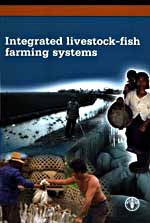
Integrated livestock-fish farming systems - Published in 2003, this book presents various practices in livestock-fish integration in farms. It illustrates that this practice can be successfully used as a strategy in reducing the environmental impacts of intensive livestock production and at the same time produce low-cost food. Farmers have proven to be adept at developing their farming systems to meet their own needs and in diversifying the role of ponds, fish and livestock within their complex livelihoods. This book identifies the factors that have led to the success or failure of such integration. It provides insights into both the concept and practice of integrated livestock-fish farming systems.
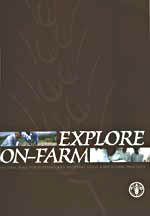
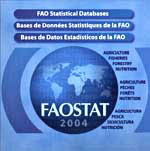
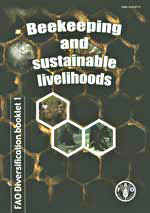
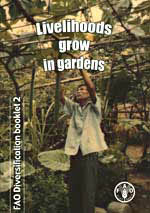
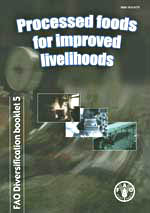
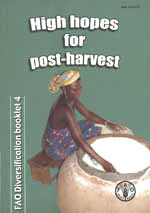
Law and modern biotechnology: selected issues of relevance to food and agriculture - This FAO Legislative Study No. 78, published in 2003, presents the extent to which international agreements and several national laws are assisting societies in realizing modern biotechnology’s potential and avoiding its possible risks. This paper came at an opportune time when modern biotechnology is rapidly progressing, giving rise to legislative needs to safeguard human health and environment.
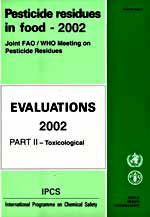
Pesticide residues in food: 2002 report - This is FAO Plant Production and Protection Paper No. 176 compiles the agreements and highlights of the 15 to 24 September 2003 annual joint meeting of the FAO Panel of Experts on Pesticide Residue in Food and the Environment and the WHO Core Assessment Group on Pesticide Residues held in Geneva, Switzerland. The panel of experts reviewed pesticide use patterns of good agricultural practices, data on the chemistry and composition of the pesticides, methods of analysis for pesticide residues and methods for estimating maximum residue levels resulting from pesticide use in good agricultural practices. The WHO group, reviewed toxicological and other related data for estimating acceptable daily intakes (ADIs) of pesticides for humans, maximum residue levels and general principles for evaluating pesticides. The recommendations of the two groups are also presented in the book, including areas for further research.
Summary of world food and agricultural statistics 2003 - Released in 2004, this report presents the differences in terms of food and agriculture between developed and developing countries, continents and regions. The publication is useful for managers and policy makers. The tables are organized according to agriculture macroeconomic indicators, population and labor force, land-use and agricultural inputs, water resources and irrigation, agricultural production and trade, forestry production and trade, fishery production and trade, and food nutrition and food security. The figures provided are based on the most recent and available data gathered. The figures also serve as benchmark data to analyze trends over time.
The state of food and agriculture 2003-04 - FAO released this Agriculture Series No. 35, with accompanying CD-ROM, to present the potential of agriculture biotechnology, especially transgenic crops, in meeting the needs of the poor. The book states that "agricultural biotechnology can help the poor by reducing the reliance on toxic agricultural chemicals, lowering production costs for farmers, enhancing the nutritional contents of food and improving the control of plant and animal diseases." These can boost agricultural productivity, reduce food prices and provide other benefits that can hopefully reach the poor. The report analyzes the socio-economic impacts of technological changes in agriculture and the current evidence on the safety of transgenic crops to human health and the environment. It also recommends investment areas in agricultural research and extension and regulatory capacities that could bring the benefits of agricultural biotechnology to the poor.
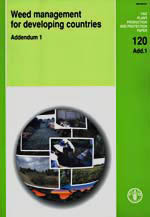
Weed management for developing countries: addendum 1 - This 2003 publication updates FAO’s 1994 release of "Weed management for developing countries" and now includes other methods aside from the use of herbicides. The paper recommends the need to evaluate weed ecology to better understand weed problems, seed banks in the soil, weed competition and the ability of crops to compete with weeds.
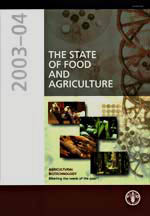
More information on these publications and other FAO releases can be viewed at http://www.fao.org/
Researched and compiled by Leah P. Arboleda